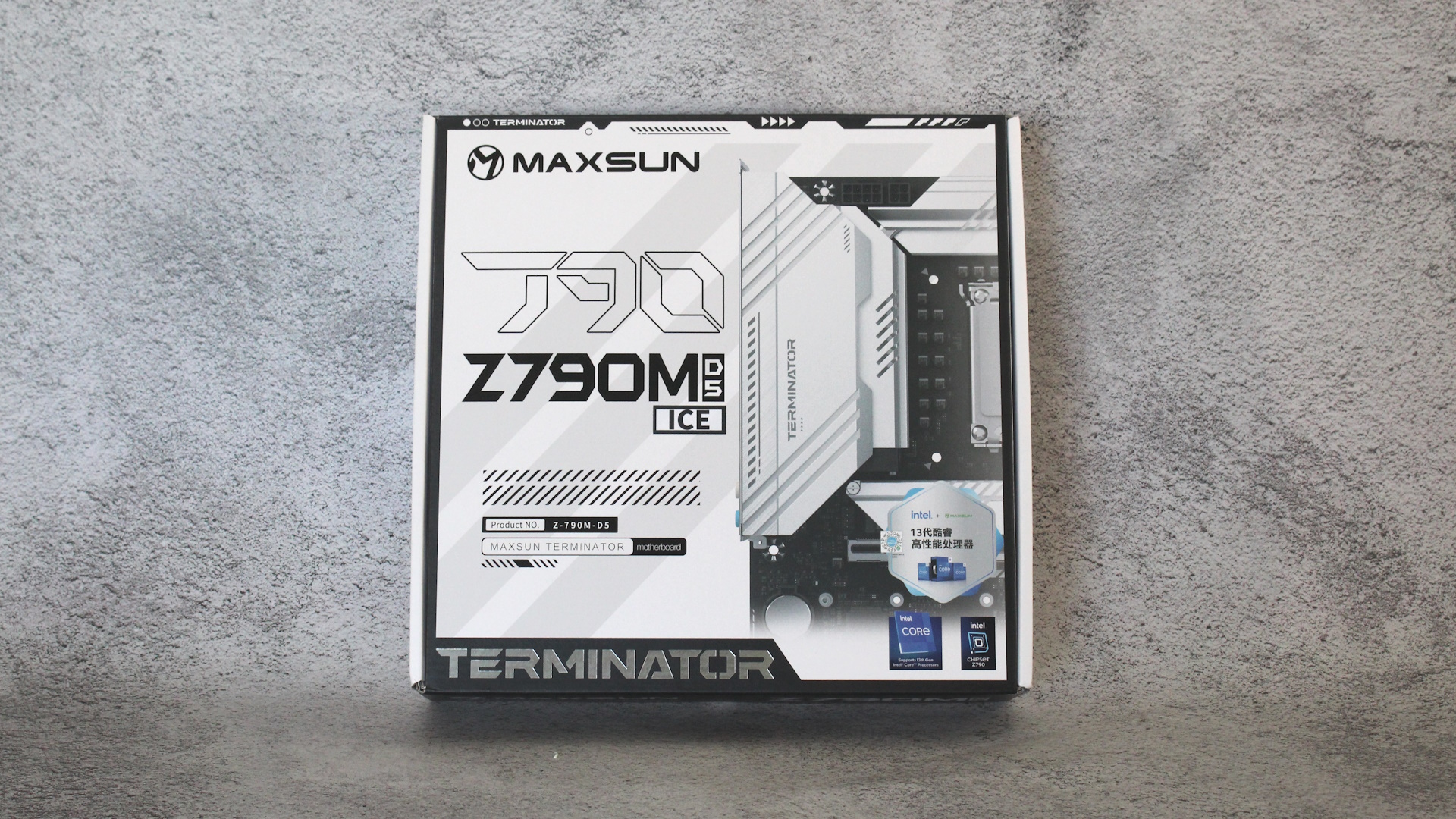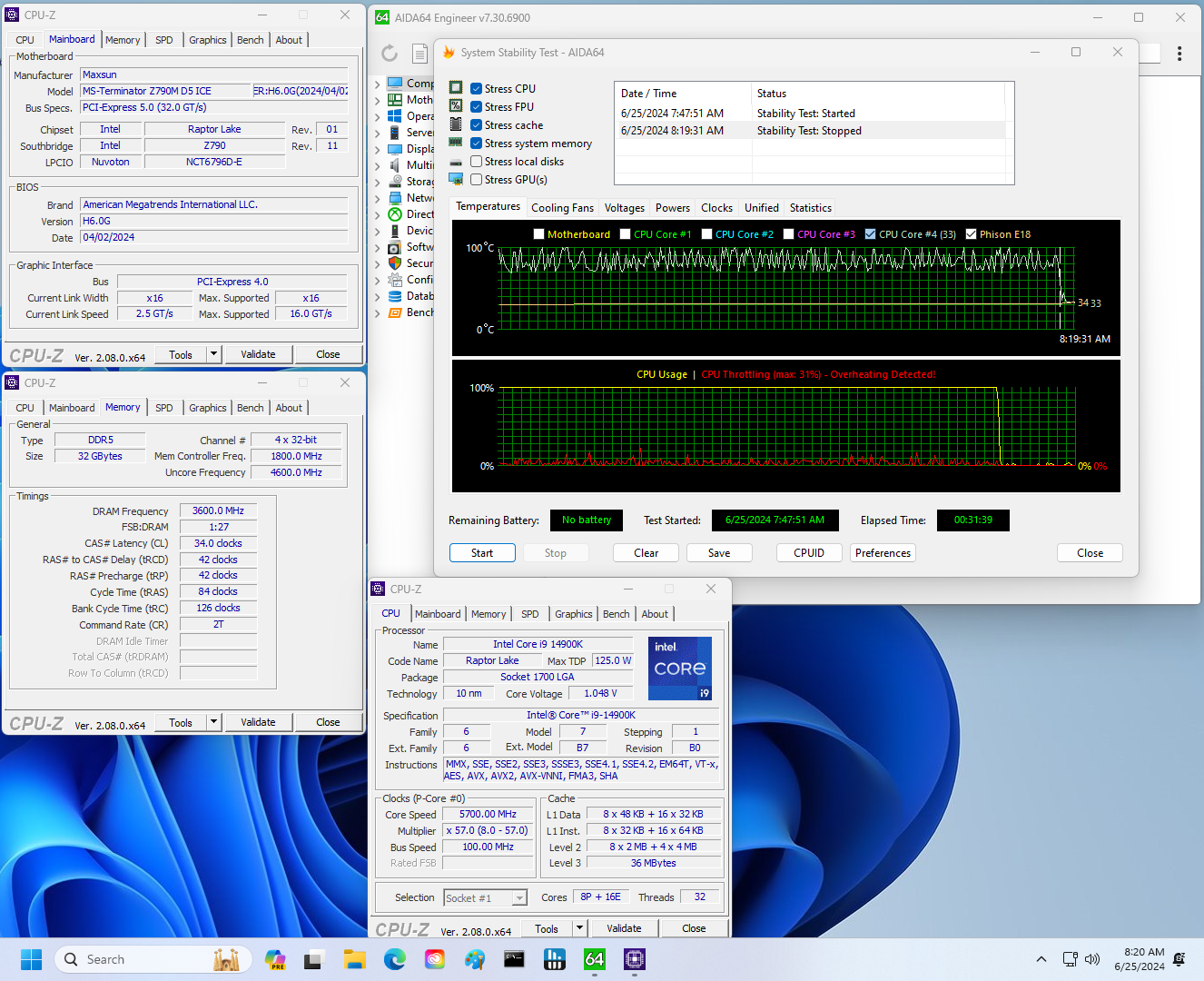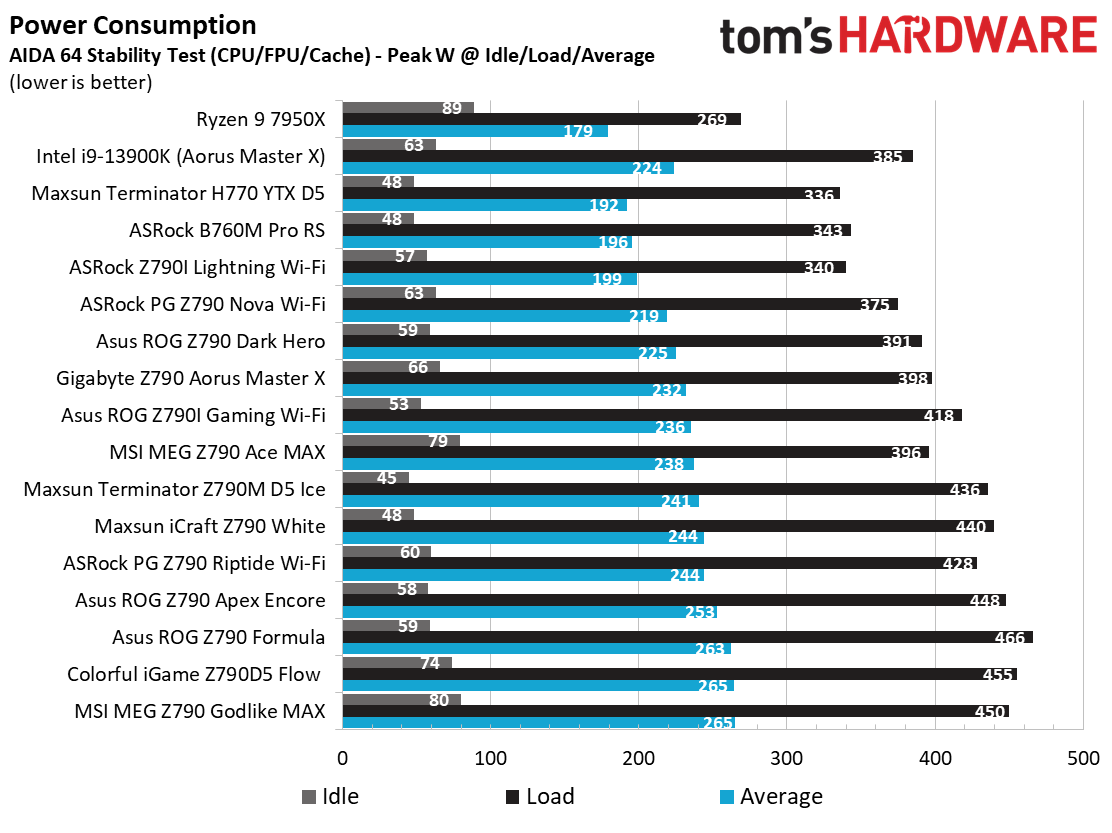Why you can trust Tom's Hardware
Our standard benchmarks and power tests are performed using the CPU’s stock frequencies (including any default boost/turbo) with all power-saving features enabled. We set optimized defaults in the BIOS and the memory by enabling the XMP profile. For this baseline testing, the Windows power scheme is set to Balanced (default) so the PC idles appropriately.
Synthetic Benchmarks
Synthetics provide a great way to determine how a board runs, as identical settings should produce similar performance results. Turbo boost wattage and advanced memory timings are places where motherboard makers can still optimize for stability or performance, though, and those settings can impact some testing.



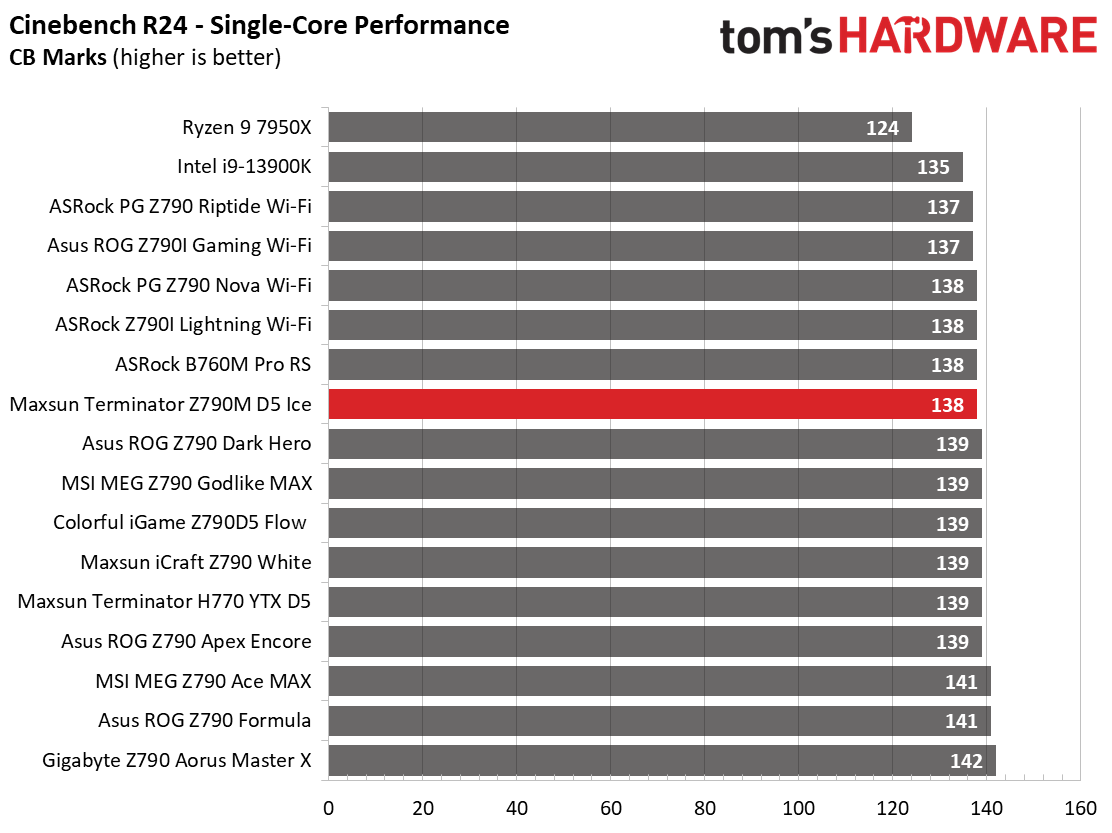
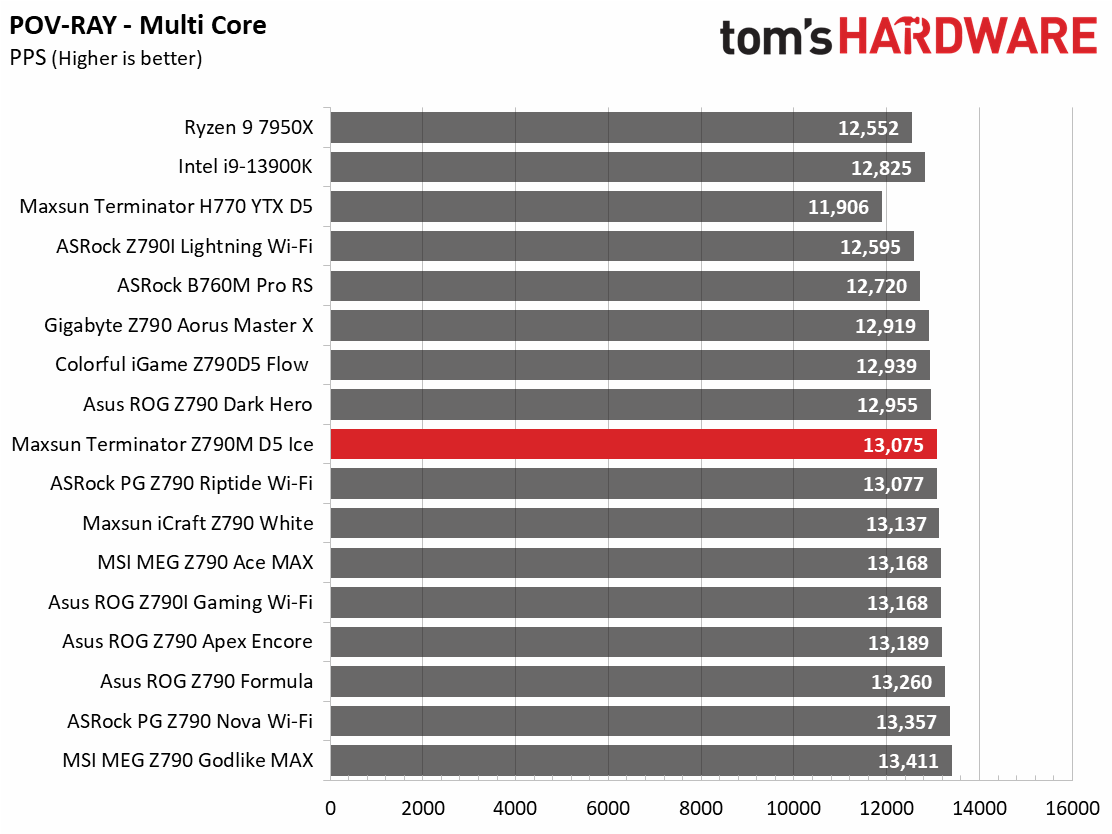
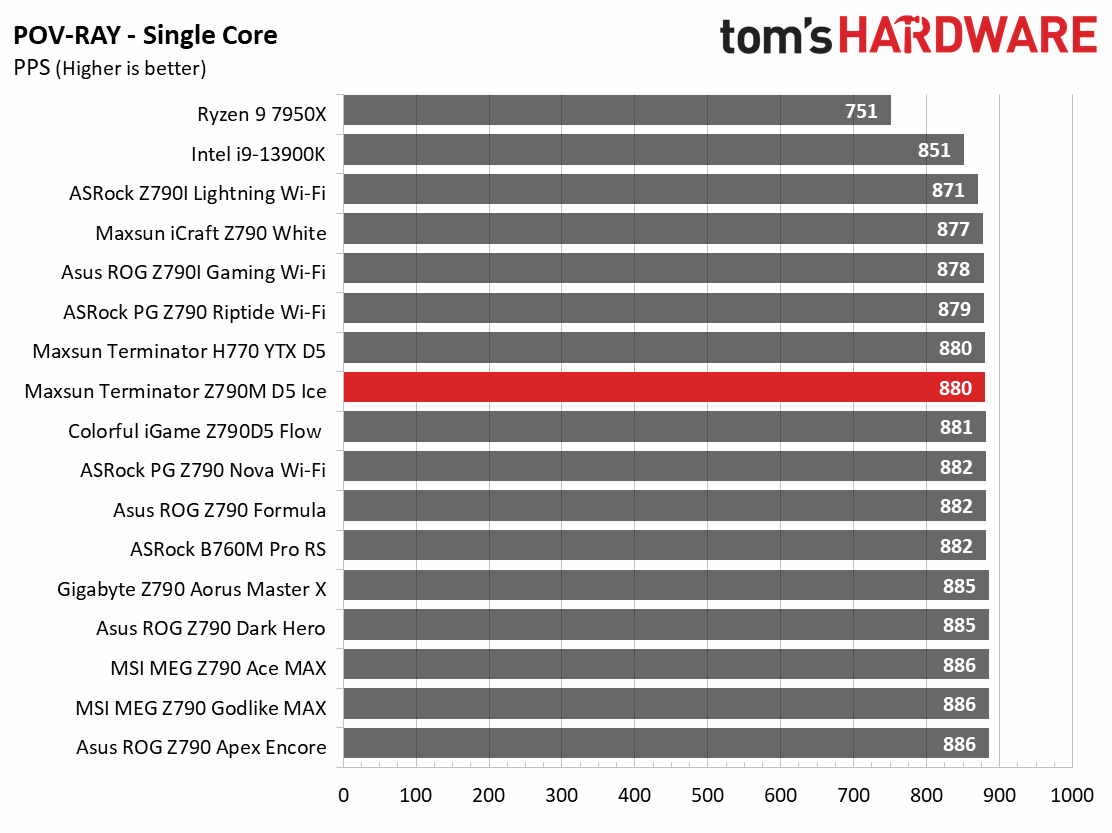

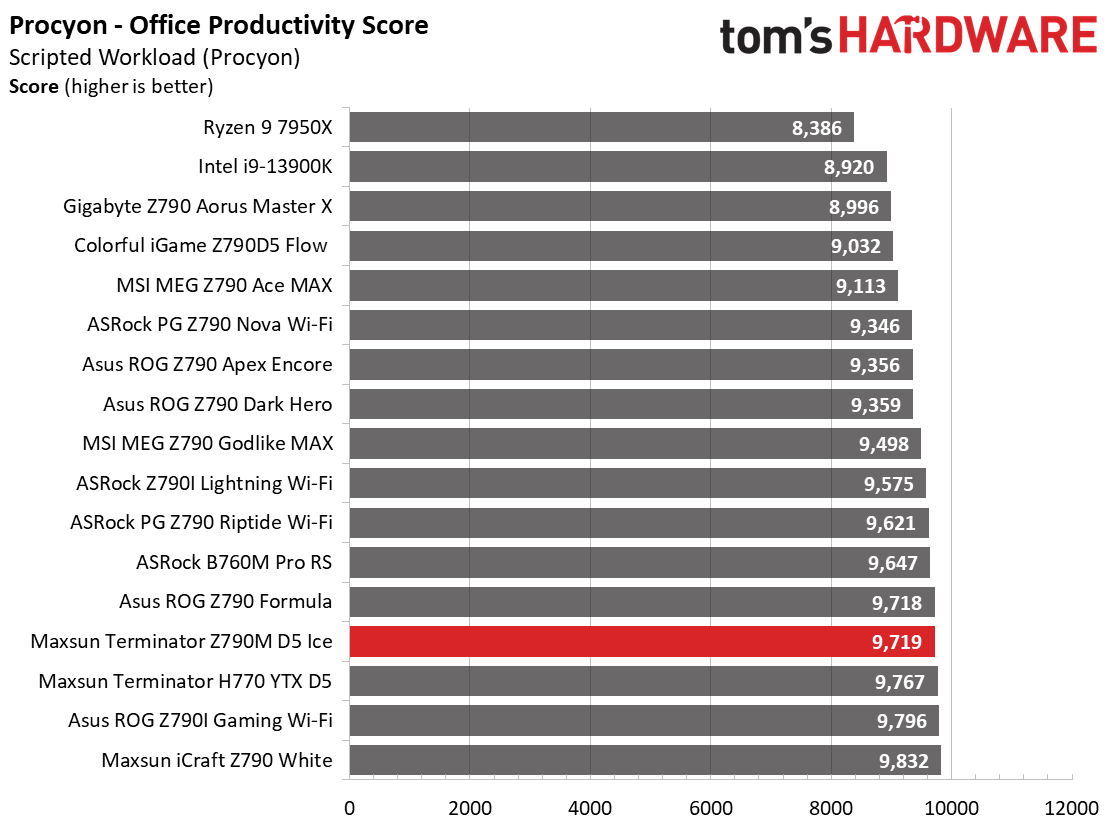

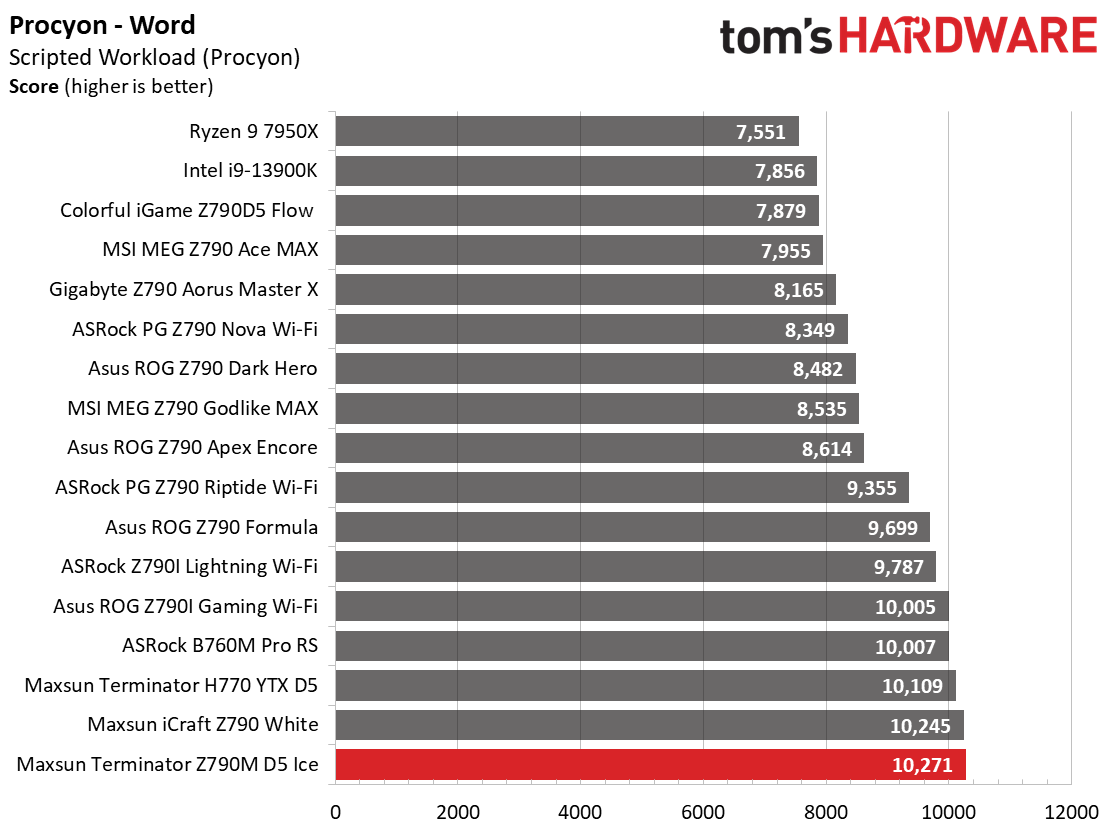
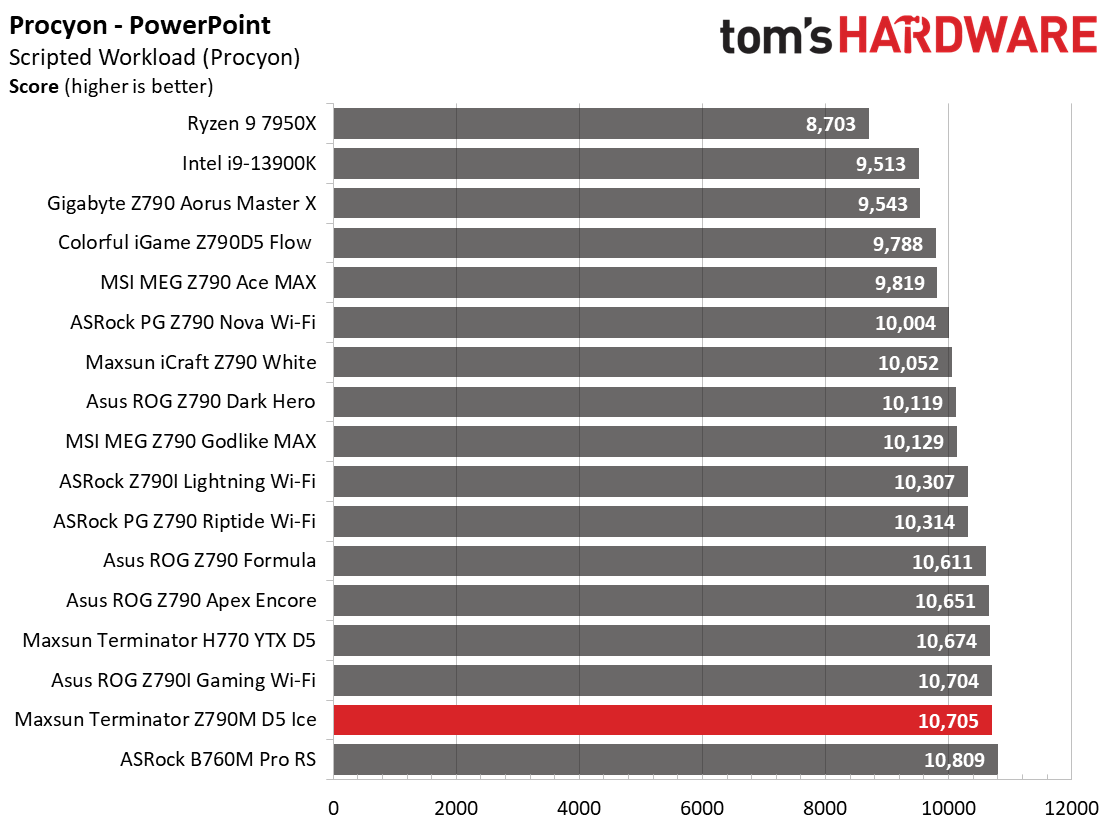
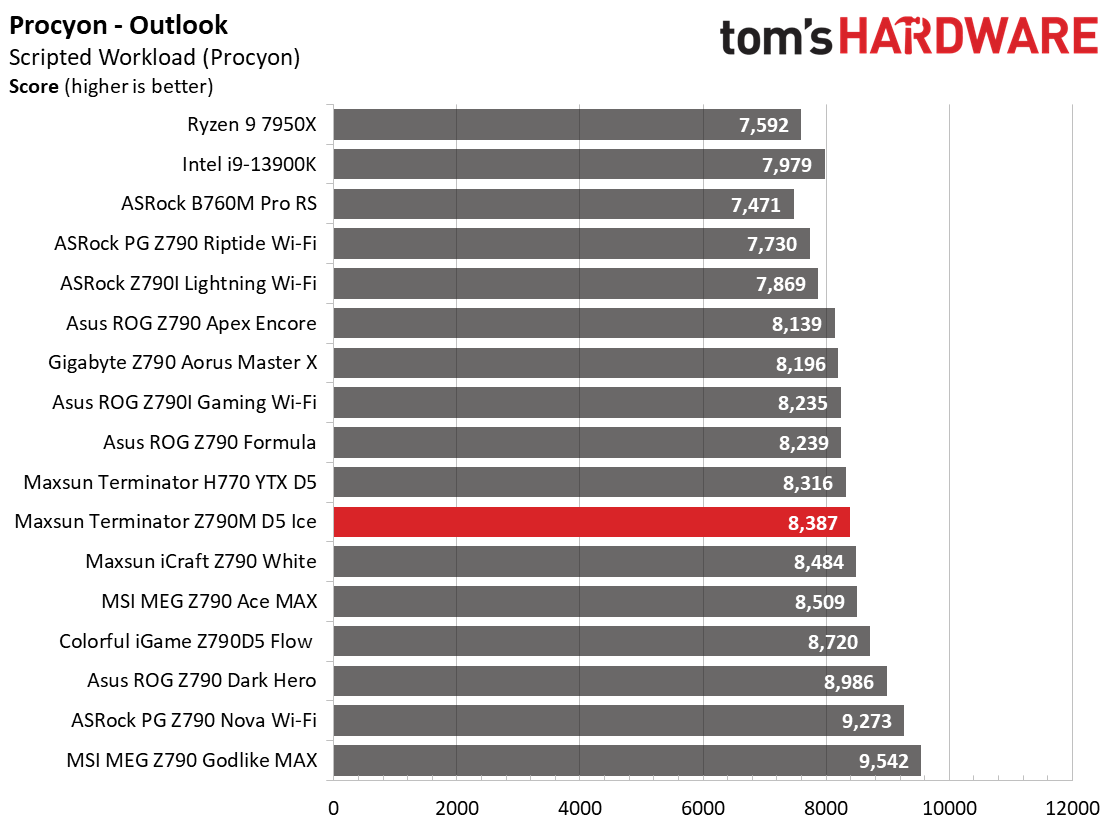
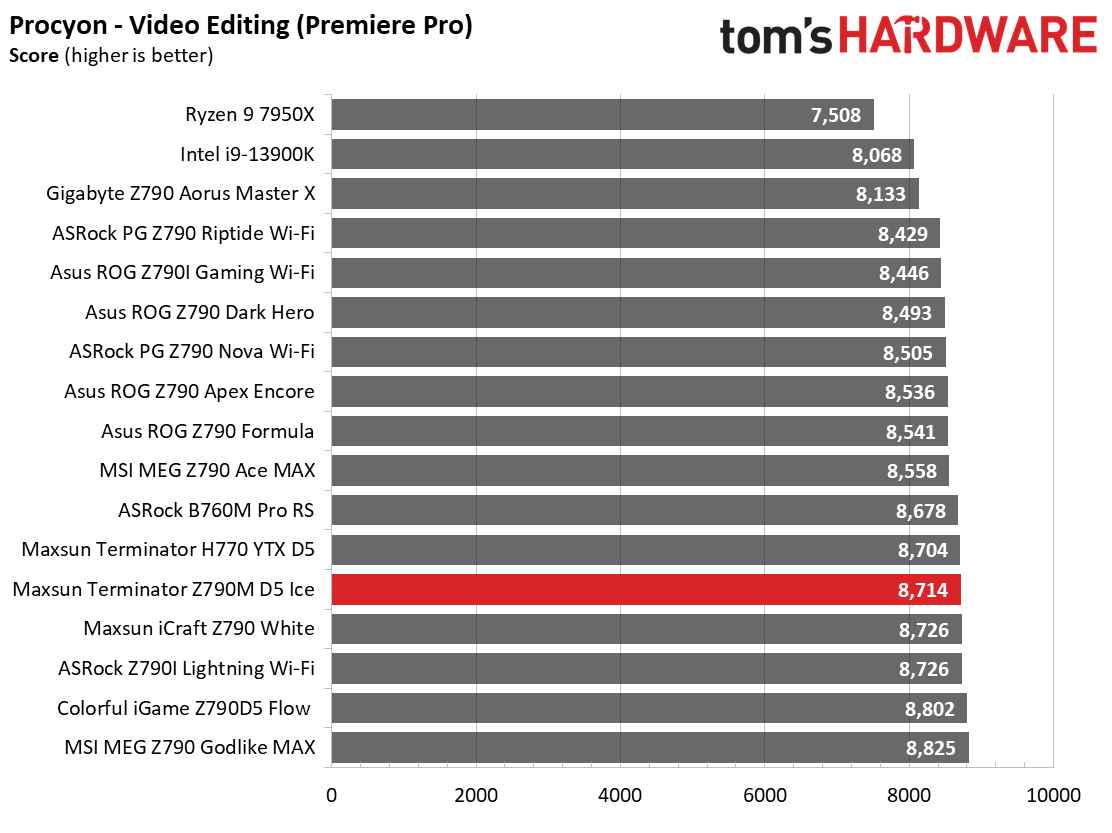

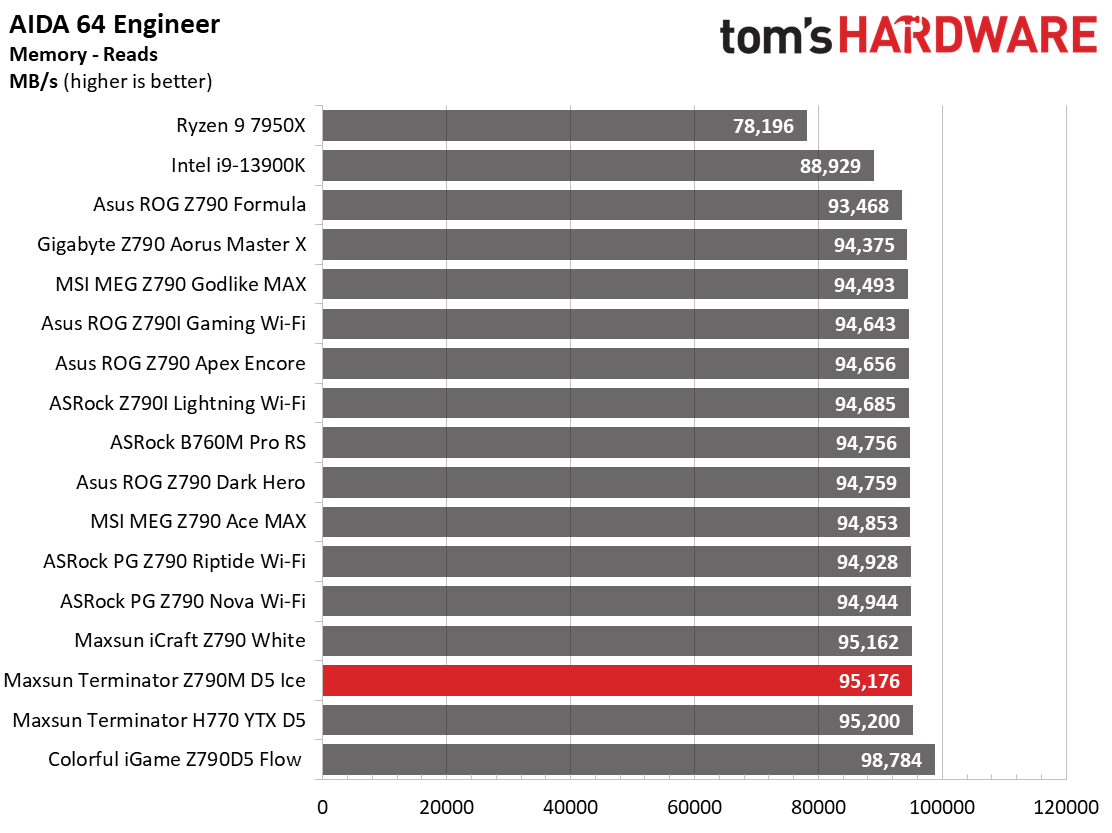



Performance in the synthetic benchmarks was average to above average across the board. The default power limit is set to 253W for PL1 and PL2, which the former is above Intel specs (like many boards). There’s nothing to worry about in this set of tests.
Timed Applications
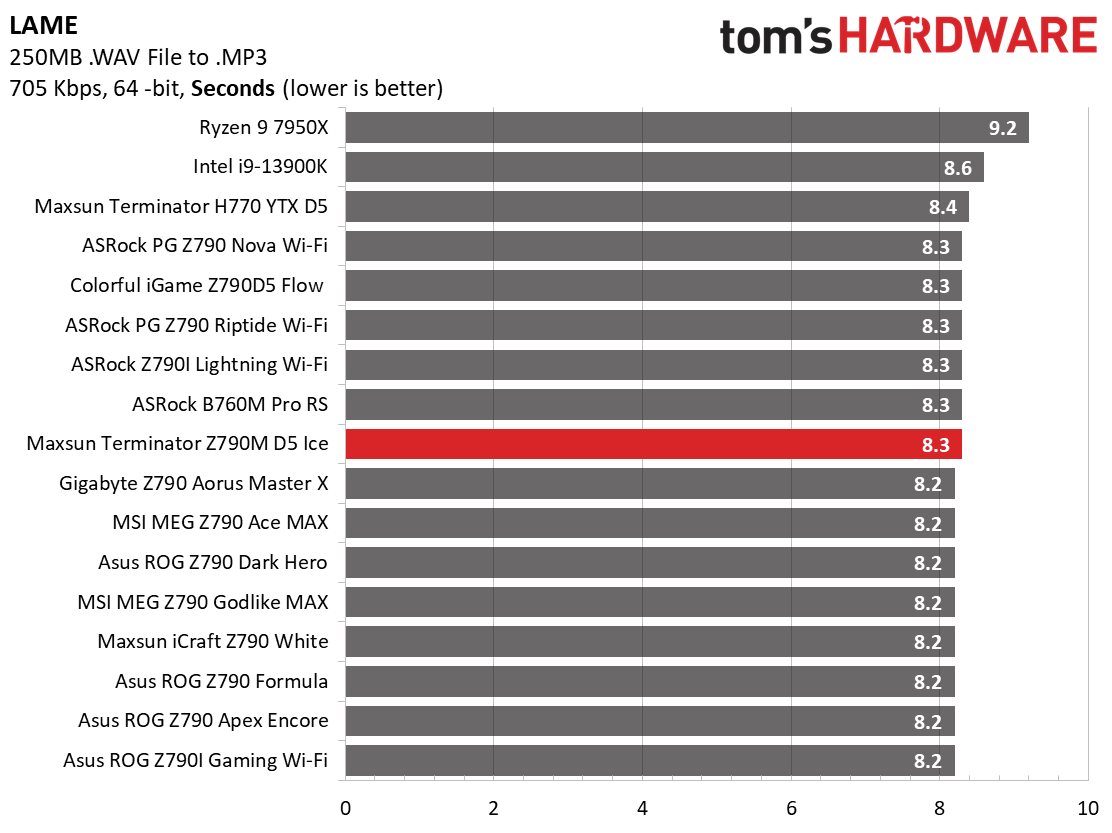
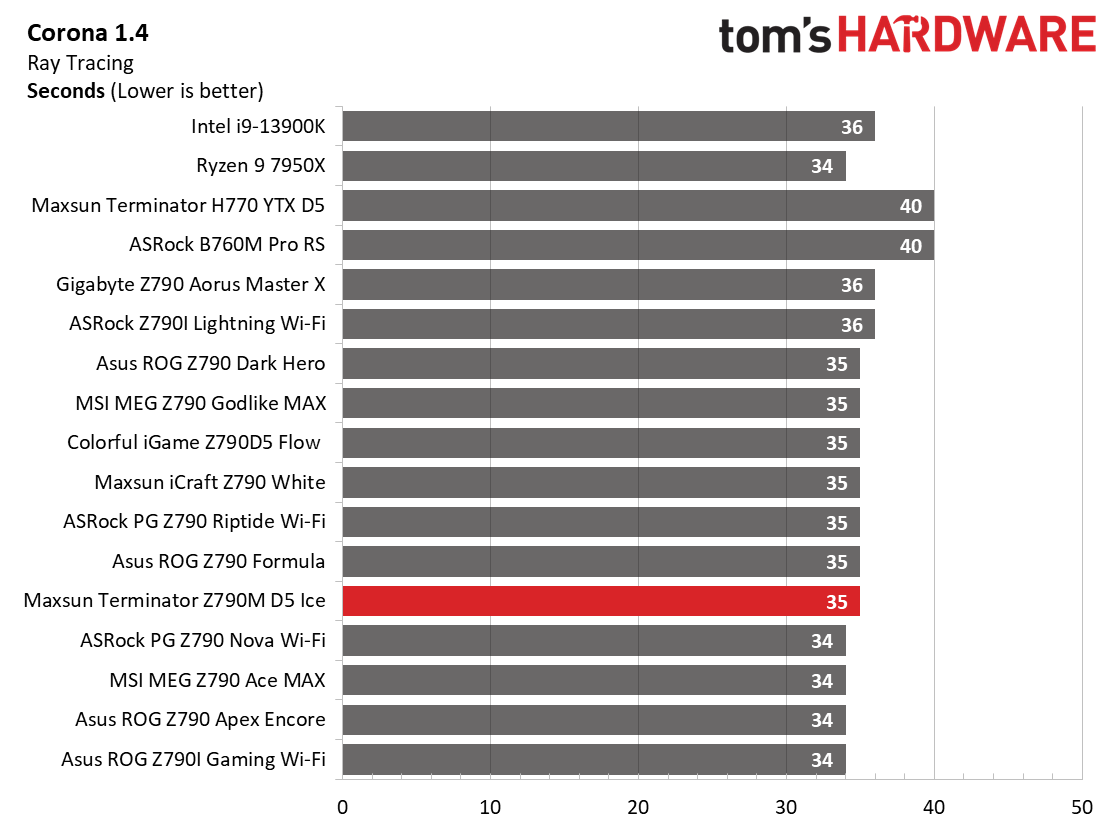

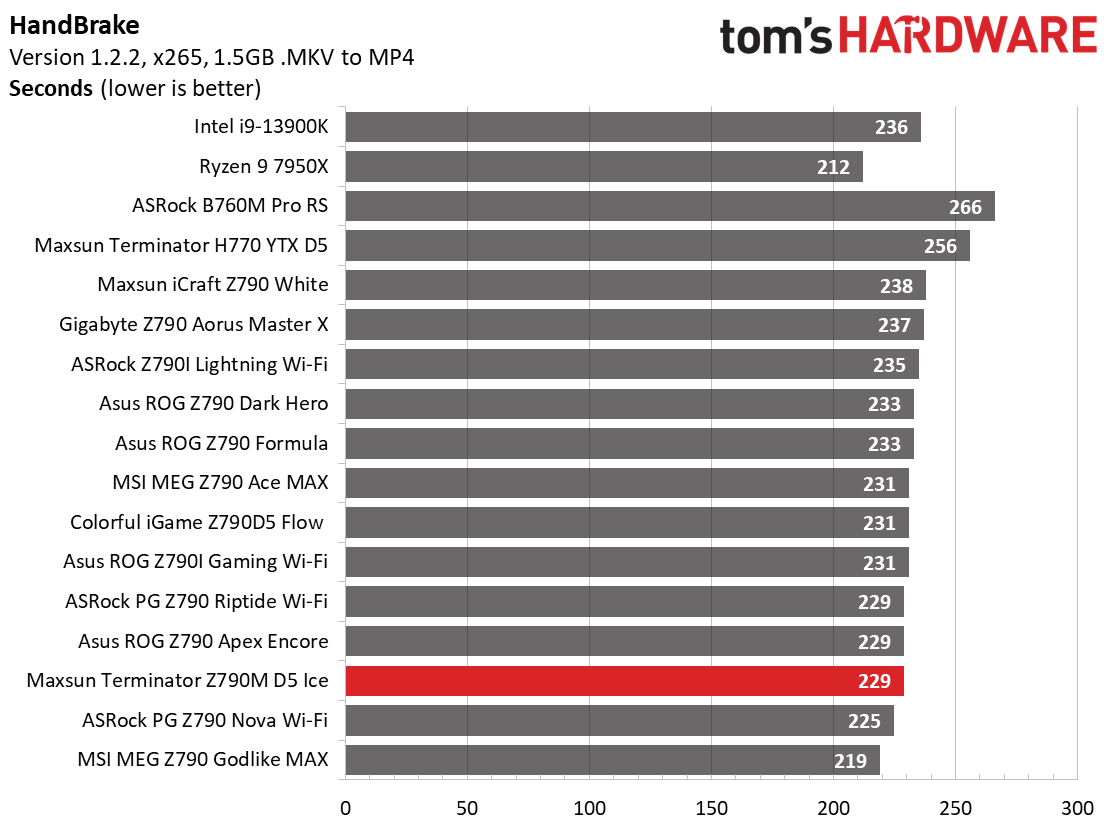
The timed applications show similar results. LAME and Corona were both average, while the Handbrake results were nominally better than the average. Still, performance-wise, it’s OK!
3D Games and 3DMark
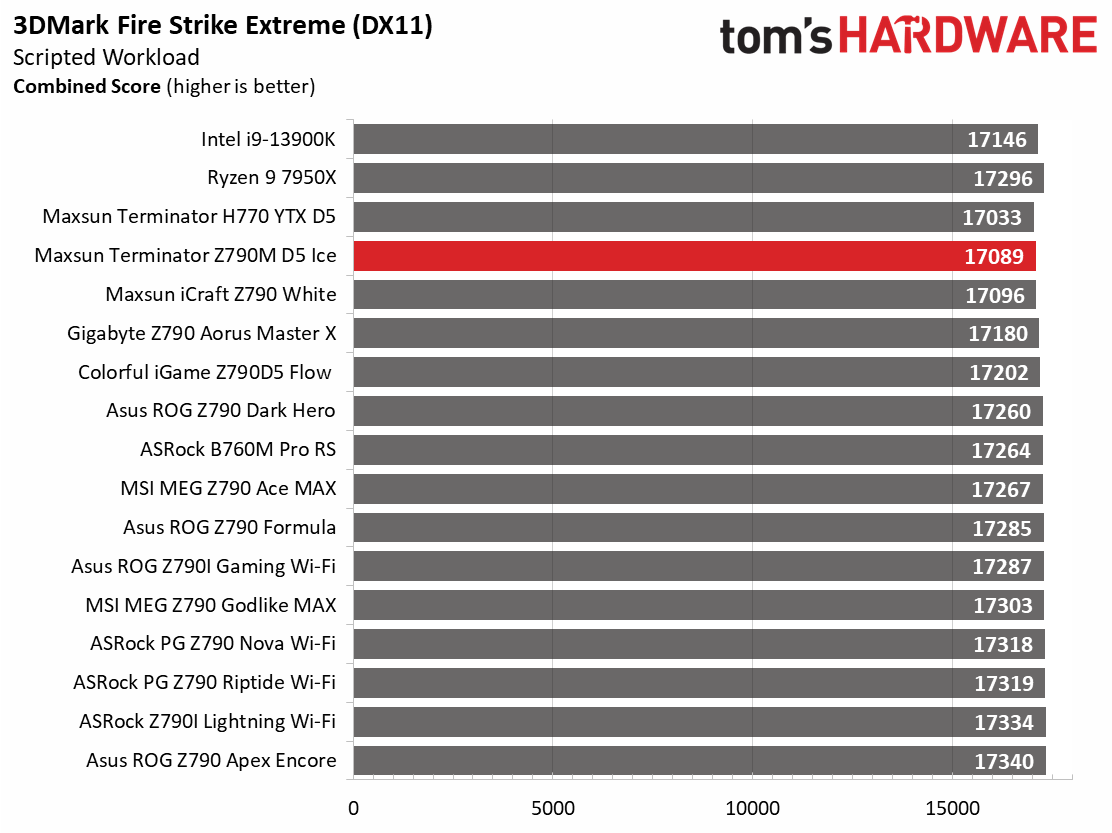
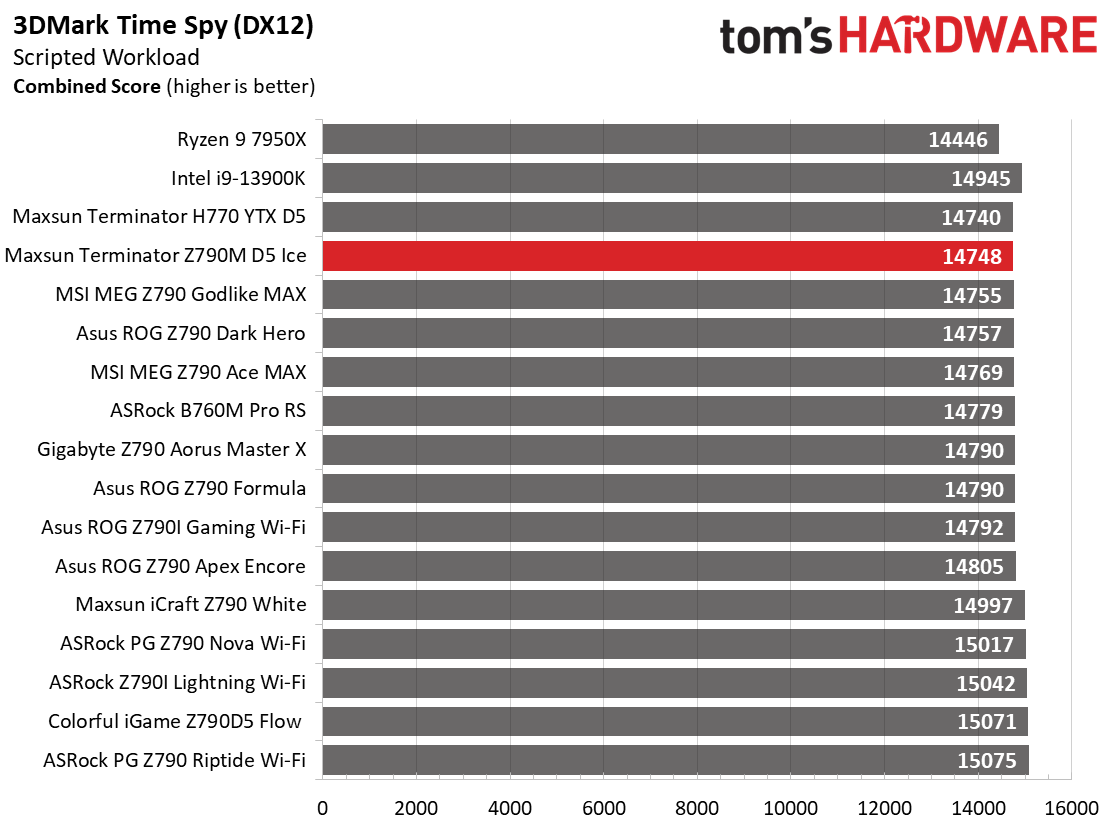


Starting with the launch of Zen 4, we shifted our test games from F1 21 to F1 22 while keeping Far Cry 6. We run the games at 1920x1080 resolution using the Ultra preset (details listed above). As the resolution goes up, the CPU tends to have less impact. The goal with these settings is to determine if there are differences in performance at the most commonly used (and CPU/system bound) resolution with settings most people use or strive for (Ultra). We expect the difference between boards in these tests to be minor, with most falling within the margin of error differences. We’ve also added a minimum FPS value, which can affect your gameplay and immersion experience.
Gaming results showed similar results to the productivity-based applications above. While the 3DMark results were marginally below average, gaming performance was spot on the average in both of our game tests. In short, you have nothing to worry about on the Z790M D5 Ice as far as performance goes!
Overclocking
Generation after generation, overclocking headroom has been shrinking with both Intel and AMD processors, with motherboard partners pushing the limits to set themselves apart from the plethora of options available to the consumer. With the overclocking headroom all but gone, we’ve left things at stock for cores but will push the Integrated Memory Controller (IMC) for faster RAM. Remember, for 14th-gen CPUs, the maximum stock spec for memory is DDR5-5600. We have a DDR5-7200 kit and a DDR5-8000 kit in-house to test the higher speeds.
Get Tom's Hardware's best news and in-depth reviews, straight to your inbox.
As far as overclocking the RAM, this board happily ran the Kingston DDR5-6000 and the Teamgroup DDR5-7200 kit by simply enabling the XMP profile in the BIOS. We didn’t try our DDR5-8000 kit as the board isn’t rated that high. Still, DDR5-7600 is plenty fast for the platform, especially a motherboard that sits more on the budget side.
Power Consumption / VRM Temperatures
We used AIDA64’s System Stability Test with Stress CPU, FPU, Cache, and Memory enabled for power testing, using the peak power consumption value. The wattage reading is from the wall via a Kill-A-Watt meter to capture the entire PC (minus the monitor). The only variable that changes is the motherboard; all other parts remain the same. Please note we moved to using only the stock power use/VRM temperature charts. Since the system uses every available degree Celsius, unless you’re using a sub-ambient cooling solution, you’ll use more power and generate more heat using default settings.
Power use on the Micro ATX board proved to be a tale of two states. At idle, the Z790M D5 Ice sipped on electricity at 45W. Once put under a stress test load, system power shot up to a peak of 436W, one of the higher values for the platform. But this makes sense, considering both CPU power limits default to 253W out of the box on this board.
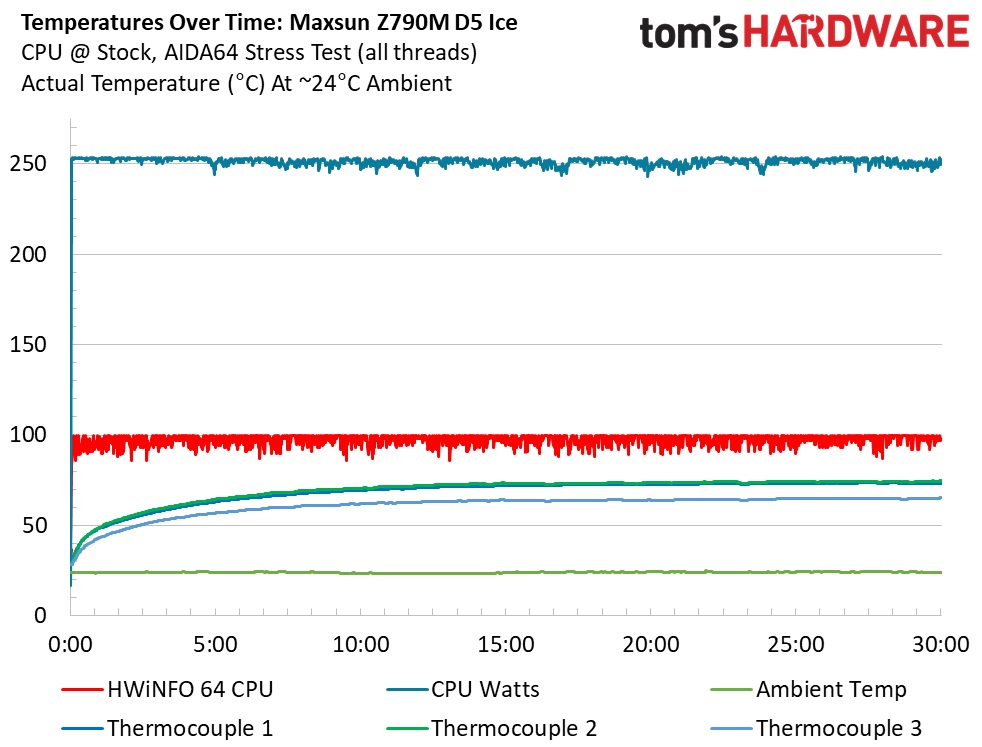
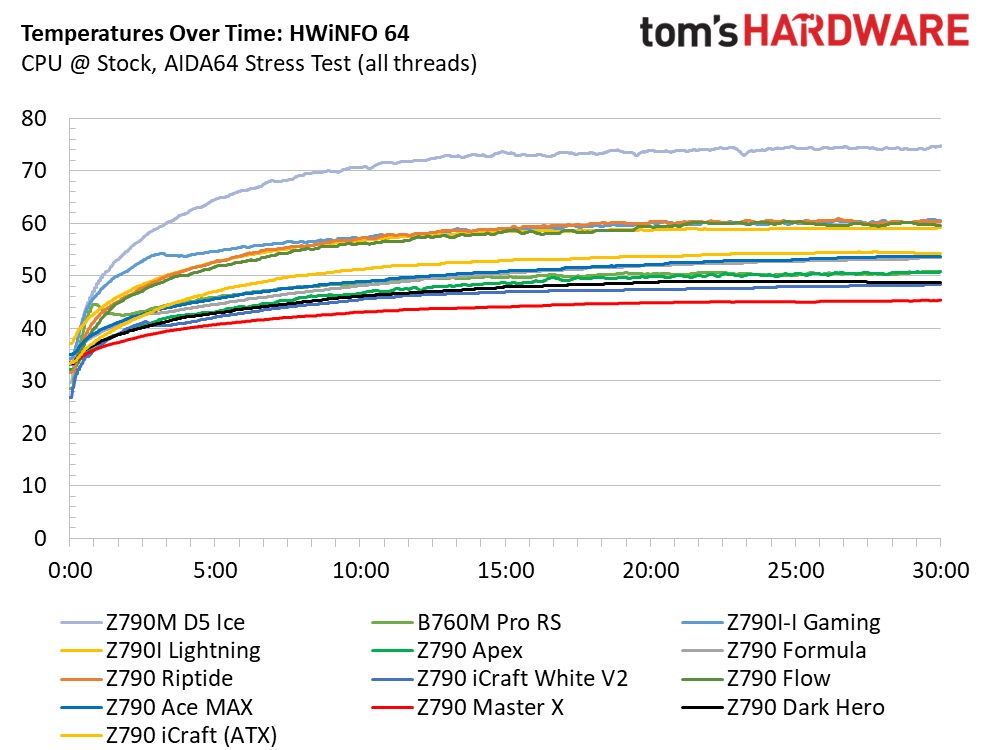
VRM temperatures peaked around 75 degrees Celsius during our stress tests. It felt hot, supporting a constant 250W load, even with the minuscule VRM fan doing work (and quietly!). It is, so far, the warmest-running power delivery setup for this generation. That said, the paltry 50A MOSFETs were still within specification, but there isn’t a lot of thermal headroom. If you plan to overclock, ensure adequate airflow inside your chassis.
Bottom Line
Maxsun has undoubtedly made a splash in the last couple of years, creating a solid name for itself in the market. We covered a couple of boards previously. Most recently, the H770 YTX Wi-Fi with connectors on the back, or the Maxsun iCraft Z790 White, is a worthwhile mid-range motherboard. The Terminator Z790M D5 Ice in hand continues that reasonably priced and well-equipped trend for the sub-$200 price point. The D5 Ice comes with more M.2 sockets (five) than most ATX boards, has two 20 Gbps USB Type-C ports, supports fast memory up to DDR5-7600, has above-average performance out of the box, and what sets it apart from most boards: the white/silver appearance.
Complaints about this board are few and far between. The biggest concern I have is with the power delivery. Understand that the 8-phase and 50A MOSFETs dedicated to Vcore will do the job on any compatible processor, but if you’re pushing flagship-class CPUs with sustained heavy CPU loads, the power delivery, even though it’s actively cooled, will get hot. Outside of that, it’s missing a PCIe 5.0-based M.2 socket, but so are its peers, and I’d like to see a Windows-based utility for monitoring/overclocking/fan control functionality.
There is some competition in the ~$200 Micro ATX space. Asus’ Prime Z790M-Plus ($206) is the most expensive but does offer some creature features for added value, like the Ai Overclocking and Q-Latches. The Gigabyte Z790M Aorus Elite AX Ice ($189.99) is a worthy competitor to our Maxsun. However, it falls short on the M.2 count. Like the Asus, it also has features to make things easier for users (EZ-Latch, for example). It even has a white/silver look and RGB lighting. MSI has no Micro ATX boards in the Z790 DDR5 space, but a slew of B760-based Micro ATX. ASRock has one Micro ATX Z790 board (Z790M PG Lightning/D4), but as you can tell by the name, it’s also DDR4.
Among the competition, perhaps the Gigabyte sticks out above the rest when looking at the big picture, but it’s still short on the M.2 storage count while most other options remain the same or similar. Performance on the Z790M D5 Ice was outstanding nearly across the board without adjusting power limits or anything outside of XMP profiles for the memory. So long as you can handle the basic look of the BIOS and don’t require a Maxsun-based monitoring or tweaking application, the Z790M D5 Ice is a worthy option in the Intel-based Micro ATX space, especially if your themed build is begging for a white motherboard.
MORE: Best Motherboards
MORE: How To Choose A Motherboard
MORE: All Motherboard Content

Joe Shields is a staff writer at Tom’s Hardware. He reviews motherboards and PC components.
-
8086 The disappearing connectivity on modern motherboards is very disappointing.Reply
Come on people. I want my pci-express slots back. And If I need 5 NVME drives, then I'll get one daughter pci-e card to run them off of. This also frees up motherboard space for other components you and I might desire and makes installing NVME drives much easier since you can just remove the daughterboard vs removing your gpu and everything else to get at the drive location..
https://www.msi.com/PC-Component/M.2-XPANDER-AERO/Specification -
Amdlova 5 nvme will make you better at gaming...Reply
If you need a 10g ethernet or a capture card or other thing you can put on your @ email -
HideOut The lack of M2 5th gen is a bummer, but using badwidth to put put 5 x m2 is cool, especially with 2 x 110mm. But the trend of crappy sound codecs is sad.Reply -
Gu3sts Shame the chipset does not support 36+ pci express lane's so all m.2 & gpu can run at full speed, assuming x4 lanes per m.2 driveReply
